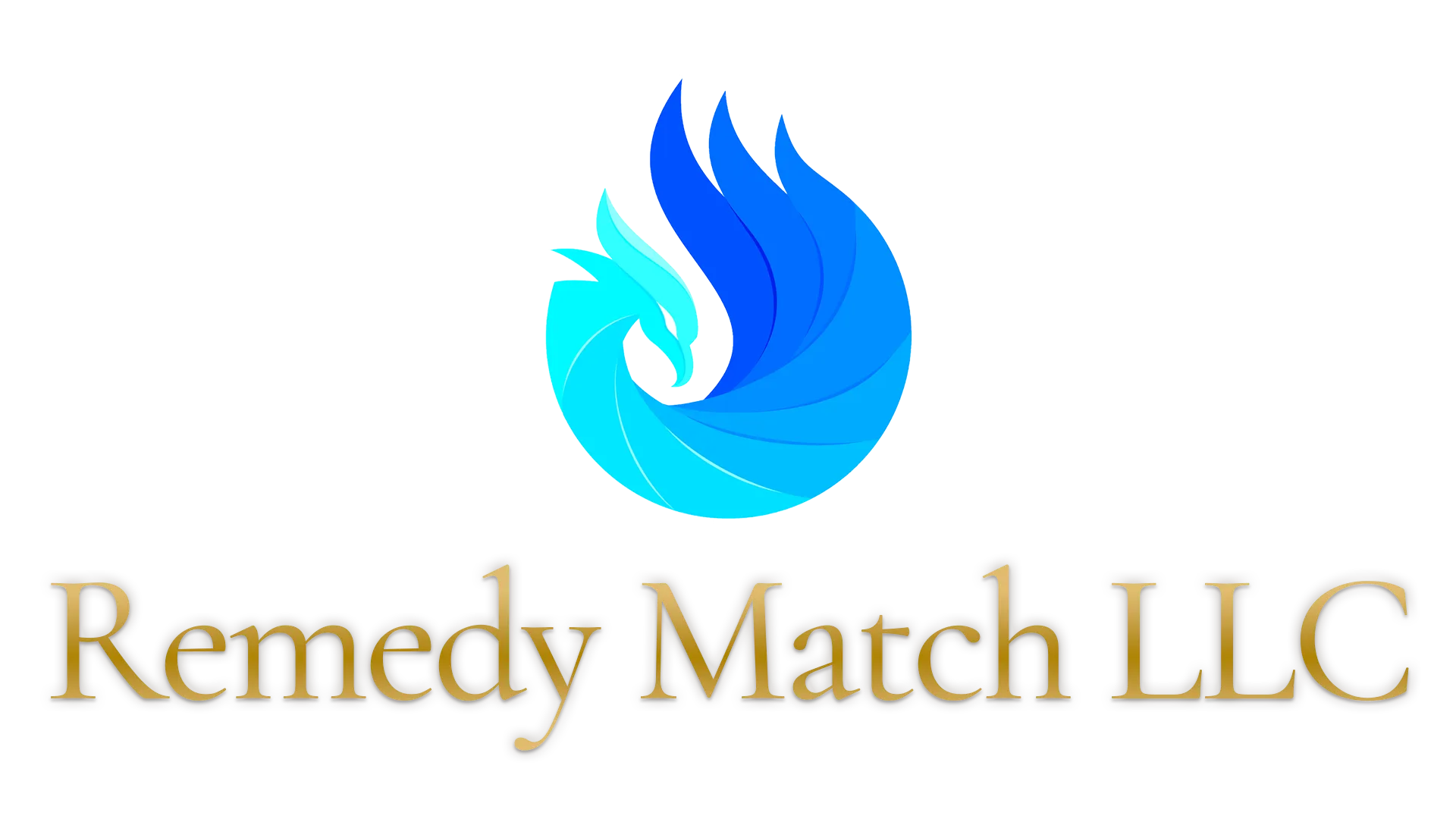The eye is the lamp of the body; so then if your eye is clear, your whole body will be full of light.
- Matthew 6:22
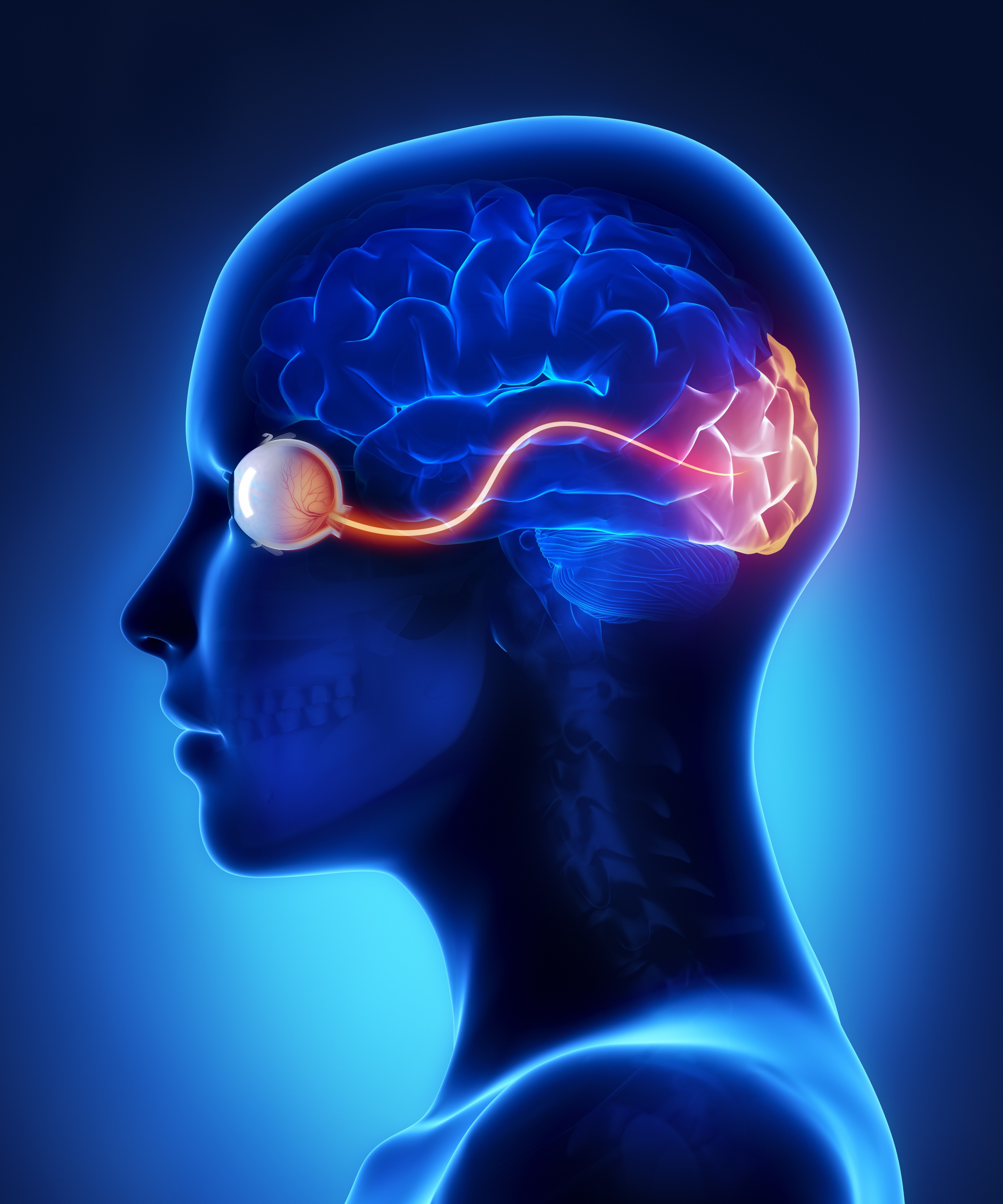
Healing is Voltage.
- Jerry Tennant, M.D.
Developer of stitchless cataract surgery
If you want to find the secrets of the universe, think in terms of energy, frequency and vibration.
Future medicine will be the medicine of frequencies.
- Albert Einstein

This chart shows the general body areas to treat for eye issues...
The collar area is used to treat the ANS (see treatment section on the Autonomic Nervous System) and the rib areas are used to treat key internal organs including the Liver (see treatment section on the Liver)...
All Matter is Energy.
- Albert Einstein
Future medicine will be based on controlling energy in the body.
- William Tiller, Ph.D.,
Professor Emeritus, Stanford
Author of Science and Human Transformation
All Matter is frozen light.
- David Bohm, Physicist
Successor to Albert Einstein (according to Einstein)
Notes from the Manual:

For allergies: (see page 115)
Labile/Stable, Stable with applicator, at a pleasant intensity level
Areas to treat:
• Upper abdomen and lower ribs
• Around the base of the neck at the level of the 7th cervical vertebra
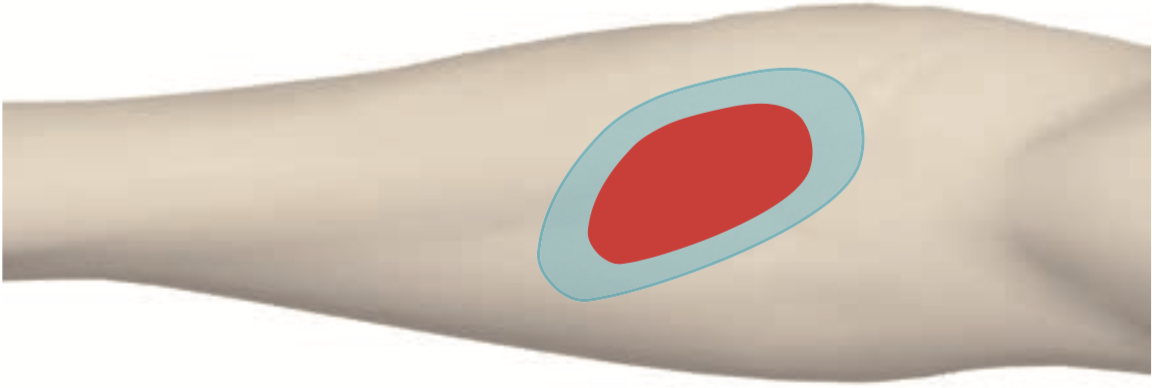

For injury and trauma:
(see page 137)
Treat around the injury (and on the opposite side of the body from the injury for reflex healing):
Stable at a pleasant intensity.
Treat around the acute wound or burn:
(see page 166)
77 Hz Stable at moderate (pleasant) to maximum tolerated intensity for 5-30 minutes, 3-4x/day
Treat until recovery is complete:
(see page 167)
Neck and Collar area:
10 Hz Stable with applicator, at a pleasant intensity level, 10-15 minutes, 1-2x/day.
Lumbosacral area:
10 Hz, ‘7710’ Stable with applicator, at a pleasant intensity, 10-15 minutes, 1-2x/day.


Accommodative Spasm, Astigmatism, Cataract, Glaucoma, Hyperopia, Myopia:
(see page 204)
Treat for 10 to 14 days, and repeat course in 1 to 2 months:
77 Hz Stable at a pleasant intensity for 10 minutes, 1 or 2 times a day.
10 Hz ‘7710’ Stable with applicator at pleasant intensity for 10 to 15 minutes, 1 or 2 times a day.
(see page 205)
Pad of the thumb:
77 Hz Stable at a pleasant intensity for 5-10 minutes daily
Temporal area
77 Hz Stable at a pleasant intensity for 5 minutes a day.

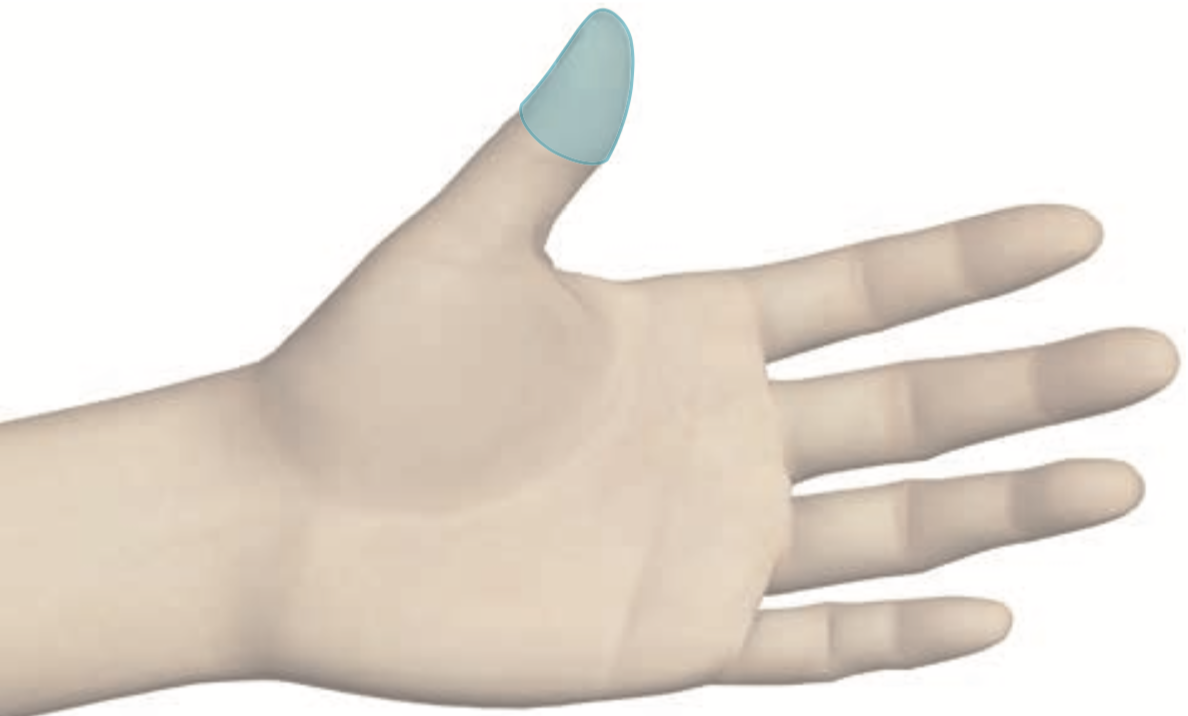
Trigeminal Neuralgia (Cranial nerve V, relates to corneal pain, e.g. after ocular herpes infection), or Bell's Palsy (Facial nerve paralysis, Cranial nerve VII):
(See page 188)
Treat the 6 trigeminal nerve branch foramen (see points on face numbered 1 through 6) until pain is relieved, or daily during the course of treatment:
77 Hz S pleasant 2-3 minutes
Treat behind and under the ears:
77 Hz S pleasant 2-3 minutes ;
Treat the neck and collar area:
10 Hz Stable with applicator at a pleasant level for 10 minutes.
(see page 189)
Treat the pad of the thumb:
9,0 Hz Stable at a pleasant intensity for 5 minutes a day for 10 days.

Treat the pad of the thumb until the symptoms clear:
(See page 195)
10 Hz Stable at a pleasant strength for 5 to 10 minutes.
(Also use page 205 protocol: see Eye Health and Function section)


Treat the Nose, Maxillary and Frontal Sinus areas:
(See page 142)
77 Hz Stable at a pleasant intensity for 5 to 15 minutes, 4 or 5 times a day.
Treat the Submandibular area (chin, jaw and under jaw down to level of trachea):
77 Hz Stable at a pleasant power level for 5 to 15 minutes, 4 or 5 times a day.
Neck and collar area:
77 Hz Stable with applicator, set at a pleasant intensity for 10 to 15 minutes, 1 or 2 times a day.
Treat the pad of the thumb as a reflex area for the head:
(See page 143)
3, 6 Hz Stable at a pleasant level for 5 minutes 1 or 2 times per day.
77 Hz Stable at a pleasant intensity for 5 to 10 minutes 1 or 2 times a day until fully recovered.

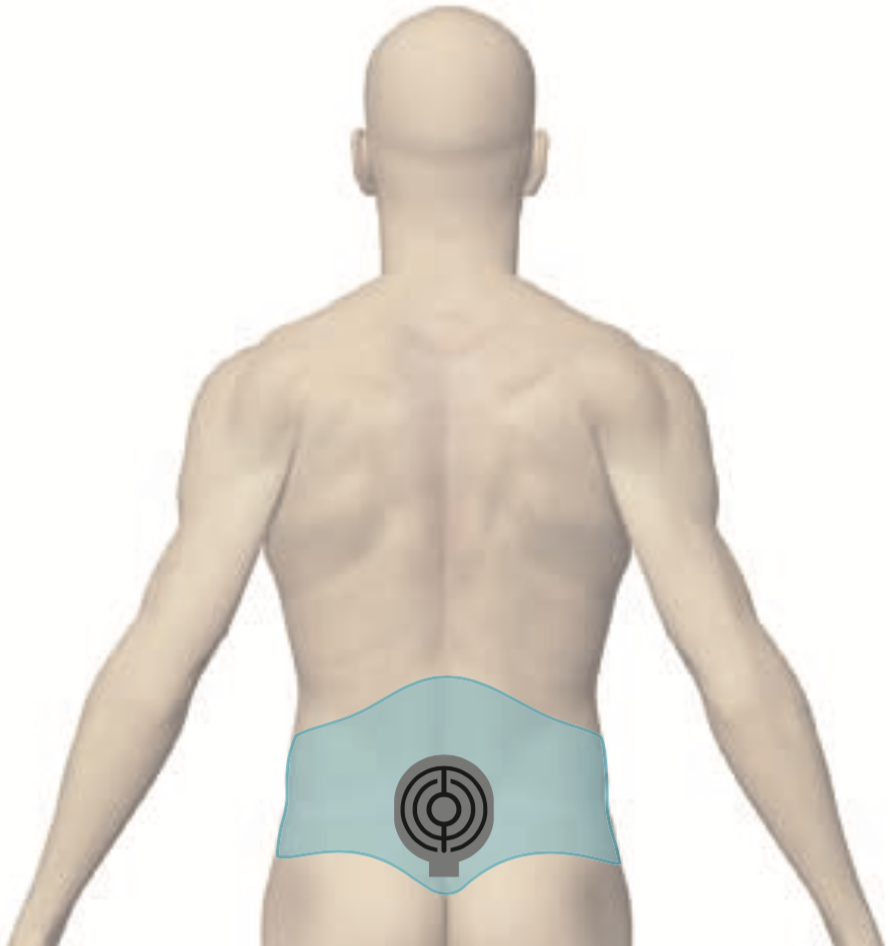
Treat the 2nd cervical vertebra:
(See page 124)
60 Hz Stable at a pleasant level 5 minutes each
Treat the neck and collar area:
Stable with applicator at a pleasant strength.
Treat the head's reflex zone at the pad of the thumb:
Stable at a pleasant intensity.
Treat the neck and collar area:
(See page 193)
77 Hz, ‘7710’ Stable with applicator at a pleasant power level for 5 to10 minutes, once or twice a day, AM and/or PM.
Treat the lumbosacral area:
10 Hz Stable with applicator set at a pleasant level for 10 to 15 minutes, 1 or 2 times a day in the AM and/or PM for 5 to 10 days.

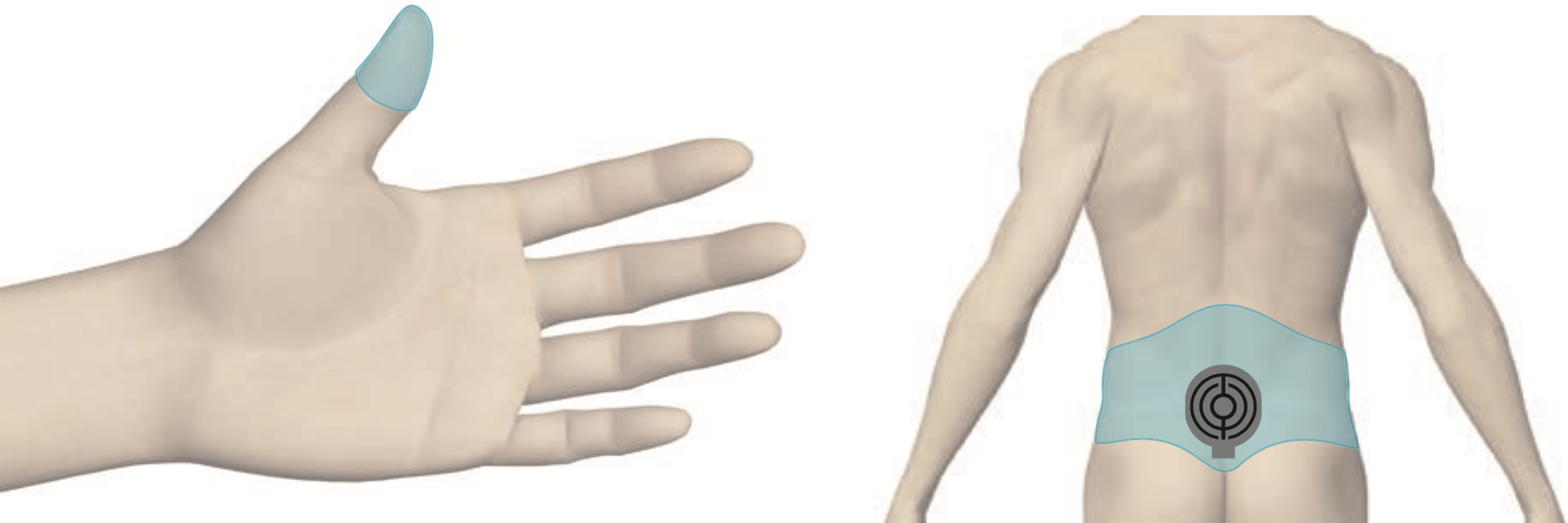
Treat the neck and collar area:
(See page 118)
Labile/ Stabile, Stable at a pleasant level.
(See page 186)
Repeat until the pain is relieved, or repeat daily during a treatment course:
10 Hz Stable with applicator at a pleasant intensity for 5 to 10 minutes.
Treat the 2nd cervical vertebra and occipital protuberance area:
10 Hz Stable at a pleasant level for 5 minutes.
Treat the painful area of the head:
9,0 Hz Stable at a pleasant setting for 5 to 10 minutes.
Treat the pad of the thumb for 10 days:
(See page 187)
9,0 Hz S pleasant 5 minutes daily.
Treat the lumbosacral area:
10 Hz Stable with applicator set at a pleasant level for 10 to 15 minutes a day.

Treat the neck and collar area:
(See page 118)
Labile/Stable, Stable with applicator at a pleasant level.
Treat the neck and collar area:
(See page 193)
77 Hz, ‘7710’ Stable with applicator at a pleasant level for 5 to 10 minutes, 1 or 2 times a day in the AM and/or PM.
Treat the lumbosacral area:
10 Hz Stable with applicator at a pleasant level for 10 to 15 minutes, 1 or 2 times a day in the AM and/or PM for 5 to 10 days
Clinical Praxis™ Therapeutics
DENAS Microcurrent Biofeedback
DENAS (Dynamic Electro Neuro Adaptive Stimulator) can be used for a very wide range of health issues...
It comes with many settings and a manual that you can explore from head to toe...
DENAS Glasses electrodes are helpful for eye and vision issues including myopia, hyperopia, conjunctivitis, cataract, macular health, and glaucoma.
Let's look in particular at how we use DENAS for a range of issues related to your eyes...
Indications:
Here are some indications for using DENA for your eyes and vision:
Tired, uncomfortable eyes (Asthenopia): Be sure to incorporate the Eye Stretch exercise into any extended periods of detailed visual work such as looking at screens, reading, writing, drafting, etcetera... (see the video on this page)
Dry eyes (Keratoconjunctivitis Sicca; Sjogren's Syndrome): Did you know that Dry Eye Syndrome is the leading cause of blindness in the world, due to its prevalence and severity in parts of Africa? Even the less severe forms we typically see in the States are extremely irritating. I have developed a system of natural remedies to support your Accelerated Self Healing™ of dry eye symptoms. Here are some related resources to check out, particularly the top 8 or so remedy matches...
Blurred vision due to spasm of focus (accommodation) or weak focusing ability (Accommodative Isufficiency or Infacility). Active focus of the eyes for near targets is innervated by the Parasympathetic division of the Autonomic Nervous System (ANS). It is functionally linked to the digestive tract. The Parasympathetic division regulates "rest and digest" functions. Eye focus control comes from the midbrain and, like digestion, it is particularly sensitive to all kinds of stresses including cognitive demands on the psyche, as well as stressful emotional states.
Nearsightedness (Myopia) and visual blur and distortion at all distances (Astigmatism) - (relates to System 2: connective tissue as the shape of the eye is distorted through malnutrition combined with socially compulsive nearpoint tasks). A deeper cause to consider is restricted movement patterns (which relates to System 1: muscles). The psychoemotional content is also relevant, as the emotion of Fear is that of the Kidneys (Water Element of TCM, and System 1: kidneys, on the same embryological tissue layer as the muscles). For an individualized analysis of your Rx (eyewear prescription) and personal recommendations you can complete the online form here.
Eye turn (Strabismus), which can manifest as crossed eyes (Esotropia), wall eye (exotropia), a vertical deviation (hypertropia) or other patterns such as non-commitant strabismus where there may be involvement of some of the three Cranial Nerves (III, IV, and VI) that coordinate eye movement. Many people have more subtle stress in this system (like high phorias, stressful relationships between Accommodation and Convergence, Suppression, Oculomotor disorders, etcetera) which can be detected by eye doctors who incorporate modalities like Vision Therapy and Syntonic Optometry in their practice. (relates to Systems 1 and 4: muscle and nerve functions)
Amblyopia (also referred to by the misnomer Lazy Eye) which can be restored functionnally in most cases at any age, contrary to narratives based on studies with cats, which have a 'critical period' of development beyond which neuroplasticity is not normally seen. Some practitioners may still tell you this cannot change after age 6... (relates to System 4: communication) Case study: A boy with unilateral high hyperopia and legal blindness due to refractive amblyopia in the affected eye achieved stable normal vision in both eyes through Orthokeratology contact lenses to reshape the cornea combined with some Vision Therapy exercises. The side of the affected eye often relates to an absent parent (right = father; left = mother).
Age-related farsightedness, also known as presbyopia (relates to Phase 2: aging terrain) Case example: I had a patient in her 50's reduce her myopia by 2 Diopters and return to wearing single vision glasses, eliminating her need for trifocals through biofeedback therapy.
Computer vision syndrome (CVS), and we can now include cell phone screen time in considering this stress pattern... Story: Back in the 1980's, I participated in the development of the first eyeglass lens designed specifically to reduce visual stress when working at a computer... The studies showed a very high rate of success at improving comfort and performance. If you go to an eye doctor who specializes in Vision Therapy, they will likely understand what to do if you ask them whether a specific prescription for use at your computer could benefit you. If you are nearsighted, it would be a reduced Rx compared to one optimized for night driving. If the power of your lenses has been increasing, an older pair of glasses can often be a good match for the distance of your computer screen...
Other eye health and vision issues: Microcurrent biofeedback is a great tool to implement in your home or office Healing Oasis... For further guidance on your unique challenges and goals, whether related to eye health and visual performance, or other wellness concerns, you can apply for access to coaching and consulting here.
Contraindications:
Not everyone can use DENAS...
Here are the absoloute contraindications for use:
Individual intolerance due to idosyncratic hypersensitivity to electrical microcurrents: Heavy metal toxicity is a typical underlying cause of electromagnetic sensitivity. Heavy metals are large atoms that do not fit through trans-membrane ion channels so they plate out on the cell membrane and in the bile ducts of the liver.The liver is the largest internal organ, and has the highest positive charge, while the brain has the highest negative charge, with a very high level of activity during daylight. At only 5% of the body weight, the CNS consumes about 20% of the total energy use of the entire body. These two organs, the liver and brain (powered by the photovoltaic panels of the retinae) run the direct current meridian system, according to our Clinical Theory™. For support in clearing up your electrical circuitry, apply for coaching and consulting here
Heart pacemaker (contraindicated for microcurrent work in the heart area):
Who should check with their health care practitioner before using DENAS?
With relative contraindications, it is recommeded to consult with your practitioner before using microcurrent therapies...
Here are the general relative contraindications for use:
Acute infection or fever of obscure origin: You need to know about 1st Line (go here).
Serious psychological stress or mental illness: In addition to seeking support from a professional who is qualified in providing non-pharmaceutical treatments, and when you are able to take on additional self-healing support, seriously consider EVOX Perception Reframing (learn more starting at the bottom of the page here) and natural remedies for stress release (explore some options like Stress Release here and ESR which stands for Emotional Stress Release here) as well as an individualized program of Accelerated Self Healing™ (learn more here) to begin to unravel the underlying causes such as deficiencies, toxicities, and epigenetic adaptations...
Intoxication with alcohol or drugs: Most detox facilities include Infrared sauna therapy to help cleanse the body of toxins and drugs. Learn more about healing with photons on the Photobiomodulation page of this site...
Venous thrombosis (e.g. a central retinal vein occlusion): Consider Fibrolysis Factors which includes the enzyme Lumbrokinase from earth worms, used in Traditional Chinese Medicine to support dissolving the clot(s)... Learn more here.
Who should check with their eye doctor before using DENAS for their eyes?
Here are the relative contraindications for ophthalmic use of microcurrent therapies:
Acute closed-angle glaucoma attack with high IOP (Intraocular Pressure) where the vision is typically cloudy and the eye feels stony hard to palpation through the eyelid
Acute retinal detachment, which can appear suddenly like a curtain obscuring part of the visual field
Recent injuries of eyes and periorbital area that are still in the wound healing phase of cicatrization (scar formation)
System 5: Containment
Areas to treat:
Basic areas of the eyes → region of the liver → collar area → abdomen
Characteristics of the procedure:
The procedure may last up to 20 minutes.
Course of treatment:
7–14 days
Areas to treat:
Lower medial angle of the eye → other basic areas of the eye → collar area
Characteristics of the procedure:
The procedure may last up to 20 minutes.
Course of treatment:
10–14 days,
1–2 courses
System 4: Communication
Areas to treat:
Upper eyelid → other basic areas of the eyes → collar area
Characteristics of the procedure:
The procedure may last up to 20 minutes, or as guided by your practitioner.
Course of treatment:
10–14 days,
1–2 courses
System 2 & 4: Connection & Communication
Areas to treat:
Lower eyelid (in the middle and in the medial angle of the eye) → other basic areas of the eyes → collar area → the region of the liver
Characteristics of the procedure:
First treat local areas until the attack of the disease is eliminated, then treat the basic areas.
Course of treatment:
10–14 days
Research Background:
Ophthalmologists Dr. I. Kachevanskaja, Dr. Y. Shabashkevich, and Dr. N. Gruzman published 6 articles in Rhythm between 1997 and 2004. They treated 80 glaucoma patients in addition to many other eye diseases. They compared multiple methods of treatment. Zero aggravations were observed with SCENAR (Self Controlled Energo-Neuro Adaptive Regulator) therapy. The results reported with SCENAR are:
• improvement of eye health
• normalization of eye pressure (IOP)
• improvement of general condition including mood, sleep, appetite, energy, efficiency
Results:
Patients completed 3 to 6 courses of SCENAR therapy, with about 10 sessions in each course. Total effectiveness was 96%. Patients were then followed for 2 years after the SCENAR therapy. Doctors monitored intra-ocular pressure (IOP), visual acuity, refractive status, visual fields, vascular health, as well as laboratory and immunologic tests. The conclusions are:
1. Glaucoma is an illness of the whole body, not only the eyes
2. First improve endocrine, nerve and immune functions before concentrating on local treatments
3. Effectiveness increases with additional courses of SCENAR therapy, at least twice a year
4. 68% of glaucoma cases remain stable during follow-up
5. 15% of glaucoma cases show sustained improvement
6. 14% show relapse, correlated with age, advanced disease, and fewer courses of treatment
More observations from the Russian research:
Treatments are individualized taking into account asymmetries on a daily or alternate day basis. Repeated courses of 5 to 10 session constitute treatment. Concomitant diseases and pathological process particular to each individual are considered relative to the eyes. The periorbital region, the foramina of the trigeminal and facial nerves, the retro occipital neck zone, the liver and the whole spinal column are treated. Results are observed in visual acuity, ocular health, tonometry, and laboratory and immunologic findings. In primary glaucoma visual acuity does not typically change. In secondary glaucoma (phacomorphic angle closure) visual acuity improved a little. IOP decreased considerably, especially postoperative. Treatment was helpful preop, improving circulation in the posterior segment, and postop, improving recovery from anesthesia. Some cases show periods of negative regulation with temporary increases in IOP.
Sources:
lethealth.us/scenar-therapy/scenar-cosmodic-for-vision/
scenarcoolum.com.au/wp-content/uploads/2013/02/SCENAR-Glaucoma2.pdf
scenar-revenko.ru/en/support/q_and_a.htmv
Areas to treat:
Lateral angle of the eye → other basic areas of the eye → basic areas → the region of the liver
Characteristics of the procedure:
The procedure may last up to 20 minutes, or as guided by your practitioner.
Course of treatment:
10–14 days,
1–3 courses
Also see the therapies listed under:
• Eye health and function from the Manual (in the left column)
• All 6 sections under "Specific Treatments for Eye Healing" below
System 2: Connection
Areas to treat:
Basic areas of the eyes → collar area
Characteristics of the procedure:
Comfortable jerking of muscles is desirable. The procedure should last 5–15 minutes.
Course of treatment:
q. s. (before sleep)
System 1: Compression
Areas to treat:
Basic areas of the eyes → collar area → region of the liver → basic areas
Characteristics of the procedure:
Comfortable jerking of the muscles is desirable.
Course of treatment:
10–14 days,
1–3 courses
As issues affect systems with lower numbers from 5 to 1, they are penetrating into deeper embryological tissue layers.
For more about this, see the Clinical Theory™ of Symptoms here.
This chart shows the general body areas to treat for eye issues...
Specific Treatments for Eye Healing
Here are more details on how to use the SCENAR to treat specific areas that support improved eye health and visual function:
Areas to treat:
The transcranial Brain Cross protocol addresses chronic vision problems especially when related to poor circulation, and supports mental, emotional and spiritual healing.
Two crossing lines activate the visual cortex, optic tracts radiating through the brain, the optic chiasm, and the optic nerves.
Use a pair of small shungite electrodes, such as 10-14mm shungite spheres.
Use auto mode or the lowest intensity level.
Over time, you can increase the intensity slightly if you wish.
The Brain Cross is enhanced by using the Harmony (ORMUS Accumulating) 172 Hz soft NIR laser or the NIR Brain helmet.
Procedure:
1. Do Ear-Brain Balancing, with one electrode placed gently at each ear canal for 2-3 minutes
2. Reverse the polarity for another 2-3 minutes
3. Put electrodes on the Third Eye point and the Base of the Skull (C1) for 2-3 minutes
4. Switch the polarity, and apply for another 2-3 minutes
Responsive Conditions:
Other issues that respond well to the Brain Cross include sleep, energy, memory, stress, headache, mental clarity, mood, PMS, ADD, vertigo, tinnitus, ear, sinus, PTSD, creativity, imagination, inspiration, motivation, purpose, addiction, and aging.
Watch for possible Negative Regulation:
Dyslexia can sometimes show an initial negative regulatory response due to detoxification.
Contraindications:
Contraindications are seizure, brain tumor, aneurysm, and acute brain inflammation.

Points to treat:
Apply the shungite electrodes for 2 minutes on the 6 points on the face in the classical SCENAR order.
Alternatively, work on pairs of point with a pair of shungites, for 2 minutes on each pair switching the electrodes after 1 minute (1-2, 2-3, 3-4, 4-5, 5-6, 6-1).
If you do not have shungite electrodes and did not do the Brain Cross technique, add the Third Eye point after the trigeminal nerve points.
Areas to treat:
Treat the Mastoid processes of the temporal bone located behind the earlobes.
Areas to treat:
Apply the Little Wings technique and work on the Collar Zone to relieve stress and improve cranial blood circulation, which is crucial for eye health and visual function.
Also work on the full length of the Spinal Column.
Areas to treat:
Work on the Liver area to restore its electrical polarity with the retina.
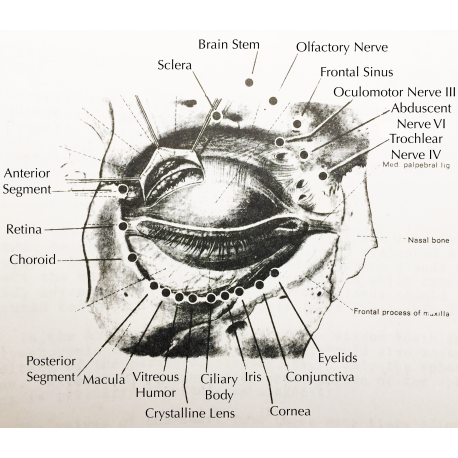
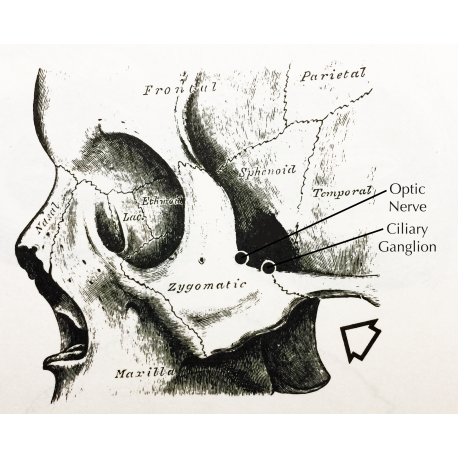
Points to treat:
In addition to use of the DENAS Glasses electrode, treat relevant Electroacupuncture According to Voll (EAV) Eye points around the boney rim of the orbit plus the optic nerve reflex point on the temple area.
See the anatomical charts for details.
How the DENAS Works
SCENAR is an acronym that stands for Self-Controlled Energy Neuro-Adaptive Regulation.
The foundational concept is that the unit senses your body energy level and responses to healing signals, and continuously adjusts the input in order to balance and harmonize the tissue response.
Energy levels that are excessive, such as inflammation, are relaxed downward to more balanced levels.
Energy levels that are deficient, such as in degenerative states, are increased, recharging your cellular membrane electrical potentials akin to recharging a battery...
What the DENAS Helps
Specific preset programs are included for:
Allergy,
Pain,
Severe pain,
Bloating,
Neuro-circulatory dystonia,
Gynecologic pain,
Gynecology,
Hypertension,
Hypotonia,
Head,
Throat,
Diarrhea,
Gastro-intestinal pain,
Constipation,
Cough,
Muscles,
Cold,
Potency,
Kidneys,
Back,
Joints,
Nausea,
Trauma,
Asthma
Screening mode allows you to scan the unit over the skin to find pathogenic zones that will benefit from treatment in therapy mode.
The Minimal Effective Dose (MED) is an automated program used 8 to 12 times at least once a day for prevention or rehabilitation of physical or mental overexertion, chronic fatigue, issues with internal organs, and prevention of colds during epidemics.
Specific Frequency Settings on the DENAS
Frequency specific microcurrent settings are available in the range of 1.0 to 9.9 Hz, including the 7.8 Hz Earthing frequency.
The Alpha Brain Wave frequency of 10 Hz is used for psychoemotional balancing, physiological balancing and prolonged pain relief.
The Beta Brain Wave frequency of 20 Hz is used for specific reflex points on the hands, feet and the ears (Su Jok), for fertility and other endocrine issues, and for enhancing and prolonging the effects of other therapies on internal organs.
60 Hz and 77 Hz are used for increasing local and regional circulation, reducing pain, inflammation and other localized symptoms, and for internal organ issues, both for acute issue and for rehabilitation.
125 Hz activates relaxation and a mild sedative effect, including in headache.
140 Hz is used for spinal and other joint issues including for pain, inflammation, edema, and rehabilitation.
200 Hz addresses very intense pain, musculoskeletal and peripheral nerve lesions, trauma and emergency care, acute illness, pain, inflammation, severe itching such as insect bites and allergies, with pronounced decongestant and symptom relieving effects. Effects last several minutes to an hour. In order to increase the therapeutic efficacy, subsequently an individual may apply lower or ultra low frequencies.
Frequency Modulation (FM) alternating 77 Hz and 10 Hz frequencies activates the parasympathetic nervous system, reduces blood pressure, and helps with relaxation, sedation and sleep.
Frequency Modulation (FM) alternating 77 Hz and 20 Hz frequencies reduces stress, anxiety, fear, and depression, and regulates vascular tone and lymph drainage.
Amplitude Modulation (AM) at 77 Hz increases vascular tone and blood pressure (the sympathetic counterbalance to 7710 therapy), relieves drowsiness, and is used for tissue toning in facial rejuvenation.
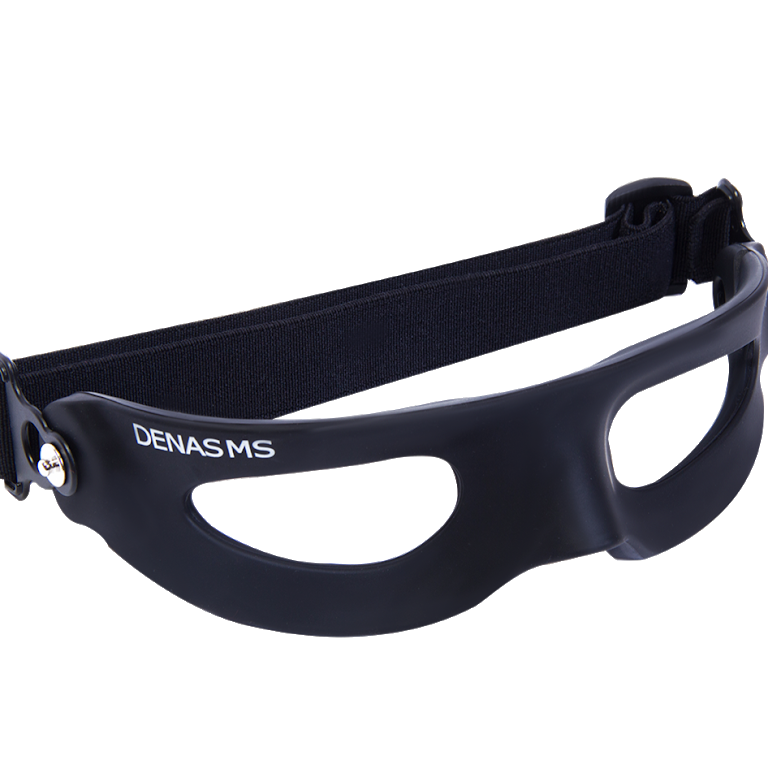
Eyeglasses Electrode
The Denas Eyeglasses Electrode is a rubberized electrode so it can make good electrical contact with the skin around the eyes.
This will give general support for the whole eye area as well as all of the eye related acupuncture points and electroacupuncture points...
While setting up and doing your DENAS microcurrent biofeedback for you eyes for about 20 minutes, you can use the video below...
At first try with your eyes open, breathing in deeply as the image in the lower right corner expands...
And exhaling as the luminous image diminishes...
As you begin to feel the rhythm of this 10 second breath cycle, you can intermittently close your eyes, and open briefly to see how well you stay in sync...
The body naturally attunes to this breath cycle of 0.1 Hz...

Acupoint Electrode
The point electrode allows you to direct healing energy to specific acupuncture and electroacupuncture points of interest.
The charts above show the most important points related to the eyes.
Of course, you can use it on other acupuncture and electrodermal screening points as well.
As you do the Eye Stretch exercise in the video above, notice any particular areas that are more tender...
Tenderness indicates excess energy and inflammatory tendency...
The Eye Point charts above will show you what these points are linked to in the eye...
Similarly, areas where pressure feels good indicate deficient energy and potential degenerative tendency...
Use the point electrode on these points as well, to energize the related reflex areas of the eye...
[NOTE: We do not currently have a source for a point electrode for the DENAS system. Use the built-in electrodes instead...]
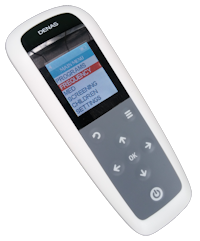
Denas PCM6
Denas uses the 'Star Trek' level SCENAR biofeedback technology developed to treat the Russian Cosmonauts during space flight.
Use of pharmaceuticals in space is both impractical (due to the size and weight of a pharmacy), and poisonous (due to contaminating the water recycling system for the entire crew).
SCENAR stands for Self-Controlled Energo Neuro Adaptive Regulation.
The computer inside the instrument adjusts the microcurrent output continuously according to the body's response...
When inflamed tissue is detected, the output is designed to reduce the energy level to normal...
When energy is in the degenerative range, it boosts the cell membrane potentials in the area...
© Copyclaim 2023
Remedy Match LLC, DBA Healing Oasis
[email protected]
PO Box 126 Hilo, Hawai'i-Kingdom [96721]
+1 (808) 217-9647
[*"The statements herein have not been evaluated by the Food and Drug Administration. This is not intended to diagnose, treat, cure, or prevent any disease."] T.D.C.
